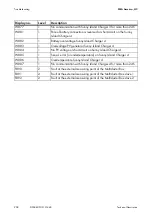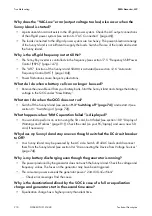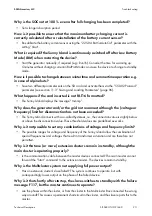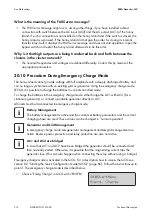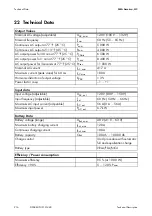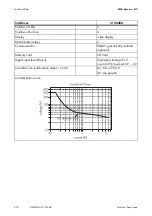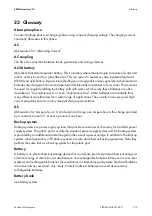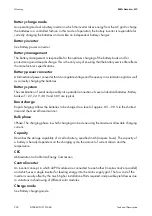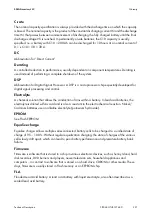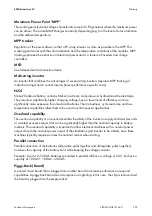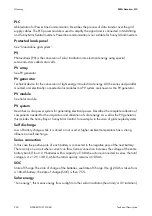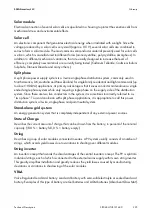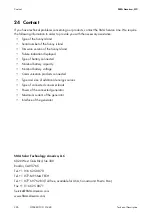
Glossary
SMA America, LLC
222
SI5048U-TUS121440
Technical Description
Flash EEPROM
The abbreviation EEPROM stands for Electrically Erasable Programmable Read-Only Memory. Flash
memory is a digital storage chip, the exact designation is Flash EEPROM. In contrast to ”normal”
EEPROM storage, individual bytes (the smallest addressable storage units) cannot be deleted.
EEPROM is a non-volatile, electronic storage component that is used in the Sunny Island, the computer
industry (among others) and usually in Embedded Systems. Flash EEPROMs are used where
information must be permanently stored in the smallest amount of space, e.g. for storing the firmware.
Float charge
Maintenance charge: Allows the batteries to be slowly charged to a state of charge of 100 % without
the negative effects of overcharging. Complete charging to 100 % using float charge takes several
days. For this reason, float charging is more important for grid backup systems and less important for
stand-alone grids.
Full charge
Recharging of the batteries to a level of approx. 95 % on a regular basis (at least once a month). This
efficiently avoids premature aging of the batteries caused by inadequate charging.
Gel battery
A type of battery in which the electrolyte (a mixture of water and sulfuric acid) is bound into a gel.
This is a type of sealed or valve regulated (VRLA) lead acid battery. A gas mixture (hydrogen and
oxygen) is always generated when lead acid batteries are charged, and in normal operation this
internally recombines to form water. This removes the need for regularly refilling the battery cells with
water, which is why these batteries are often described as ”low maintenance” or even ”maintenance
free” (see also AGM batteries). Gel batteries are available from many different manufacturers for a
wide range of applications. There are Gel batteries for high-current applications but also for cycle
operation with very good deep-cycle resistance.
Grid-coupled system
PV system that is connected to the power supply grid of an external energy supplier, such as the utility
company.
Inverters
A device for converting the direct current (DC) from the PV generator into alternating current (AC),
which is used by most normal household devices and especially for feeding energy into an existing
supply grid. Inverters for PV systems usually include one or more MPP trackers, store operating data
and monitor the grid connections of the PV system (see also MSD).
Inverter mode
See Inverter operation
Inverter operation
Operating mode of a battery inverter where it supplies the stand-alone grid from the battery energy.
In this operating mode, the battery inverter is especially responsible for the control of frequency and
voltage in the stand-alone grid.
Содержание SUNNY ISLAND 5048-US
Страница 2: ......
Страница 78: ...Operation SMA America LLC 78 SI5048U TUS121440 Technical Description Overview of the Menu Structure...
Страница 227: ......
Страница 228: ...4 NFSJDB XXX 4 NFSJDB DPN...

